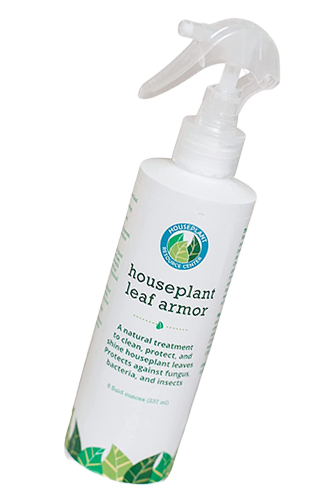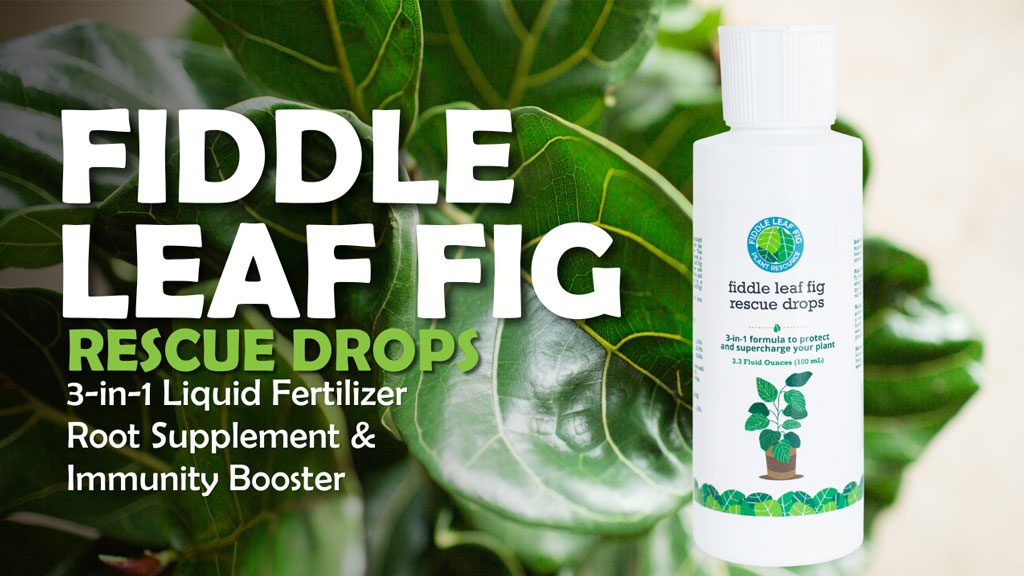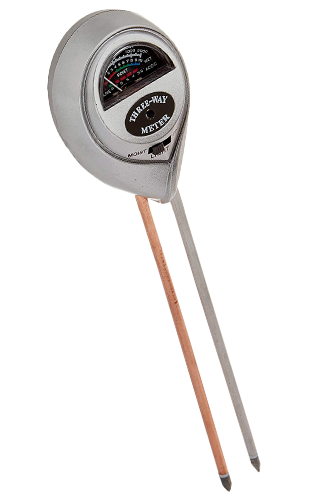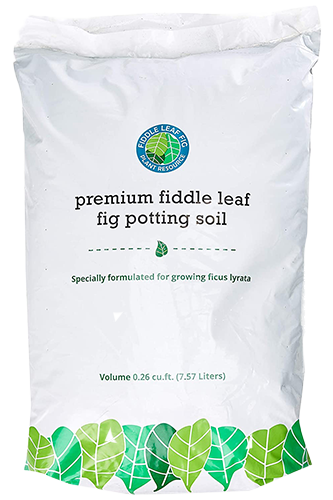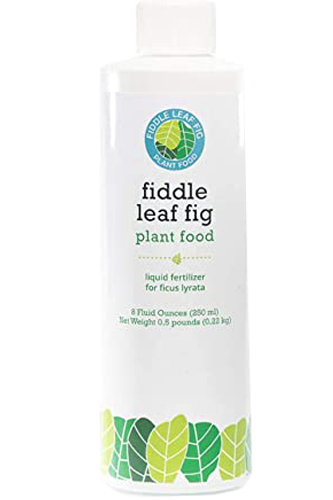When fiddle leaf figs are unhappy, it almost always shows up in the leaves first. But what do those weird fiddle leaf fig spots actually mean?
Is that discoloration a sign of overwatering or sunburn?
Sometimes you just need a photo troubleshooting guide instead of vague descriptions.
So we’ve put together this handy photo reference (with a free download!) for different fiddle leaf fig issues you might run into.
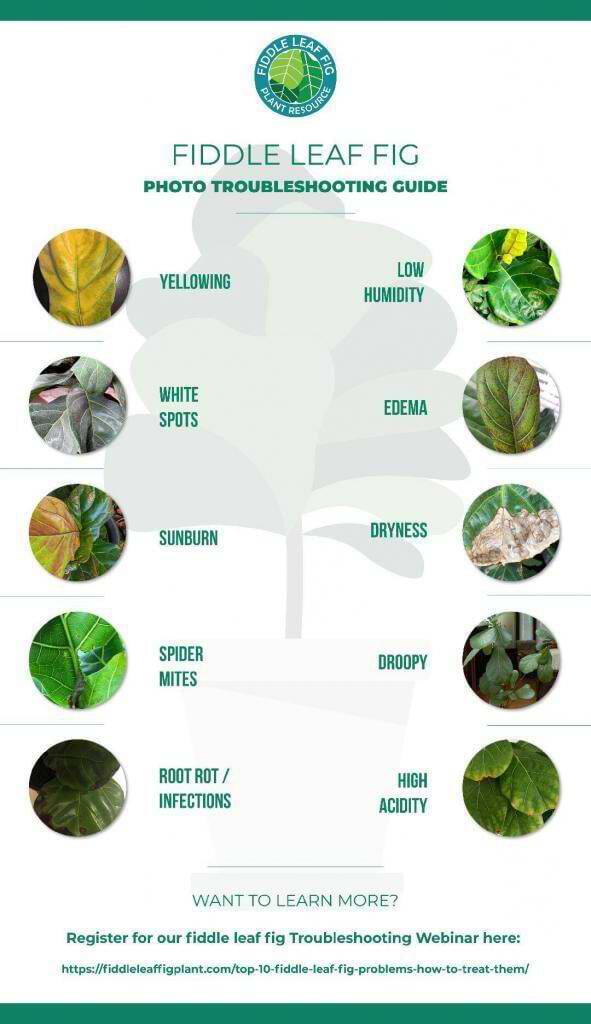
We hope this helps you keep your fiddle happy and healthy!
Your Fiddle Leaf Fig Spots Photo Troubleshooting Guide
What causes fiddle leaf fig leaves to yellow?
Yellow fiddle leaf fig leaves can be caused by too much water, not enough light, or a lack of nutrients. Keep reading for more fiddle leaf fig spots photos. d
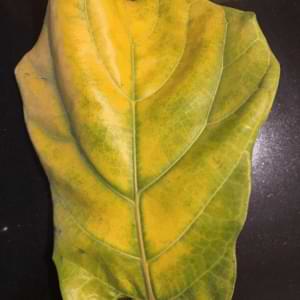
Fiddle leaf fig leaves tend to yellow for a few reasons: too much water and/or not enough light, and nutrient deficiency (which you can fix with a liquid fertilizer like Fiddle Leaf Fig Food.
Learn more about this issue here: How to Fix Yellow Fiddle Leaf Fig Leaves
What are white spots on fiddle leaf fig leaves?
Clean your fiddle leaf fig leaves to avoid white spots.

Fiddle leaf fig spots can be white. White spots like this aren’t an issue with the leaves themselves but are actually dust and/or mineral deposits left behind by hard water.
It’s important to clean your fiddle’s leaves regularly to keep them beautiful and shiny, but also to keep the pores clear so the plant can continue to respirate and photosynthesize properly.
Try our Leaf Armor to clean your plant’s leaves and fortify them against dust, debris, insects, and bacteria. It works for your other houseplants too!
Learn more about cleaning your fiddle’s leaves:
How to Clean Your Fiddle Leaf Fig Leaves (Video)
What’s the Best Way to Clean Fiddle Leaf Fig Leaves?
Hard Water Spots on Fiddle Leaf Fig Leaves: 3 Simple Steps for Removing White Residue
Do’s and Don’ts for Shiny Fiddle Leaf Fig Leaves
What causes fiddle leaf fig leaves to become red?
Fiddle leaf fig plants can get sunburned.
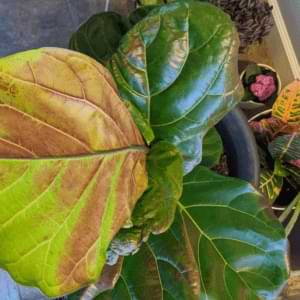
If your fiddle isn’t acclimated to full sun, its leaves can actually get sunburned if exposed to direct sunlight for too long! Check for sunburn if you have rust colored fiddle leaf fig spots.
Fiddles love light, but it’s important to make sure they just the right amount of bright, indirect sunlight so that they don’t burn.
Learn more about fiddles and light:
How (and Why) to Acclimate Your Fiddle Leaf Fig to Full Sun
How Much Light Does a Fiddle Leaf Fig Tree Need?
Why do fiddle leaf fig leaves look eaten away?
Spider mites can cause small dark spots and eat away at fiddle leaf fig leaves.

If you notice tiny fiddle leaf fig spots, dark spots on new and mature fiddle leaves, if you see sections that look eaten away, and/or if you find webbing or tiny, moving dots, you’ve probably got spider mites.
These tiny insects suck moisture out of your fiddle’s leaves and can eventually kill your plant if left untreated, so if you notice these symptoms, nip it in the bud!
Leaf Armor can also protect your fiddle’s leaves from insect damage. Make sure to check out our articles on dealing with spider mites and other insects that may plague your fiddle leaf fig:
How to Get Rid of Spider Mites on Your Fiddle Leaf Fig
The Ultimate Guide to Fiddle Leaf Fig Insect Problems
Why are there brown spots on fiddle leaf fig leaves?
Root rot and bacterial infections cause dark spots on fiddle leaf fig leaves.
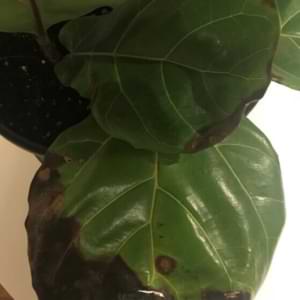
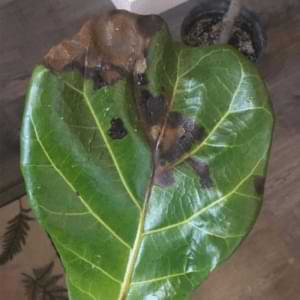
Fungal root rot and bacterial infections can cause fiddle leaf fig spots that look black, dark brown, and medium brown spots on your fiddle’s leaves. While these are different issues, the treatment for them is essentially the same: repot into fresh soil, give the plant sufficient light, ease up on watering, and use a root rot treatment to help the roots heal and prevent the problem from getting worse.
Learn more about diagnosing and treating root rot and infections:
Everything You Need to Know About Root Rot in Fiddle Leaf Figs
6 Ways to Prevent Root Rot in Fiddle Leaf Fig Plants
How to Treat and Prevent Root Rot in Fiddle Leaf Fig Trees (Video)
Diagnosing and Treating Root Rot in Fiddle Leaf Figs
How to Prevent and Treat Bacterial Infections in Fiddle Leaf Figs
What does it mean if fiddle leaf fig leaves are cracking and puckering?
Cracking and puckering fiddle leaf fig leaves usually means low humidity.

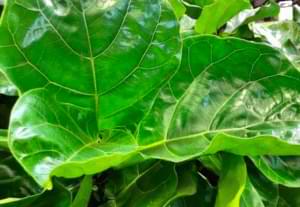
Fiddle leaf figs are tropical plants, so they need a fair amount of humidity to keep their leaves supple and healthy. If your tree isn’t getting enough humidity, you may notice puckering and cracking leaves like these. Low humidity can cause fiddle leaf fig spots.
The ideal range for a fiddle is 30 to 65 percent humidity, so if you live in a very dry area, you may want to supplement with a humidifier or pebble tray.
Learn more about fiddles and humidity here:
Signs Your Fiddle Leaf Fig Needs More Humidity
How Much Humidity Do Fiddle Leaf Figs Need?
Why Misting Your Fiddle Leaf Fig Might Be a Bad Idea
What causes small red, brown, or purple spots on fiddle leaf fig leaves?
Inconsistent watering can causes small red, brown, or purple spots on fiddle leaf fig leaves.
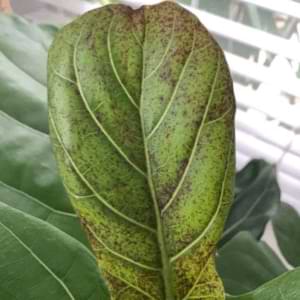
If you notice little fiddle leaf fig spots that look red, brown, or purple spots on your new fiddle leaf fig leaves, it’s probably edema, which is caused by inconsistent watering. The spots should fade as the leaves grow, so don’t be too alarmed. But this is a clue that you may need to dial in your watering routine.
Learn more about edema and watering fiddle leaf figs:
Edema on Fiddle Leaf Fig Leaves
Red Spots on New Growth on Fiddle Leaf Fig Trees
The Ultimate Guide to Watering Your Fiddle Leaf Fig Plant
What causes light-brown or tan spots on fiddle leaf fig leaves?
Crispy, light-brown or tan spots on fiddle leaf fig leaves means it needs water.

If your fiddle is in serious need of a good watering, you might see crispy, light-brown or tan spots on the outside of leaves all over the plant.
If you see this, water your plant!
You might also want to make sure that your soil isn’t compacted or pulling away from the edge of the pot because this can prevent the soil (and roots) from absorbing water, even if you water regularly. If your soil is compacted, you may want to repot your plant or at least aerate the soil.
Learn more about watering your fiddle and preventing underwatering here:
The Ultimate Guide to Watering Your Fiddle Leaf Fig Plant
How Dry Is Too Dry? When to Water Your Fiddle Leaf Fig Tree
How and When to Water your Fiddle Leaf Fig Plant
4 Sneaky Reasons Why Your Fiddle Leaf Fig Is Drying Out
Why are fiddle leaf fig leaves drooping?
Fiddle leaf fig leaves can droop because it needs water, it needs light, there has been a change, or it’s burned.
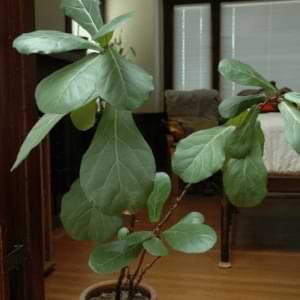
Droopiness can have a few different causes: thirst, insufficient light, shock from change (yes, fiddles can be drama queens), and sometimes chemical burn.
If you notice droopy leaves after repotting or relocating, just leave the plant alone. It should perk back up within a week or so.
If you haven’t done anything differently, check the soil to see if your fiddle is ready for a drink. Not that? Try increasing its light exposure.
Have you recently applied something like insecticide or detergent to the leaves? You may need to rinse the leaves with plain water to prevent more serious chemical burn.
Learn more about droopy leaves and how to treat here:
Drooping Fiddle Leaf Fig Leaves: 5 Causes and How to Diagnose
The Seven Signs Your Fiddle Leaf Fig Needs More Light
How Dry Is Too Dry? When to Water Your Fiddle Leaf Fig Tree
What causes yellowing and crispy, brown spots on the edges of fiddle leaf fig leaves?
Yellowing and crispy, brown spots on fiddle leaf fig leaves are caused by nutrient deficiencies.
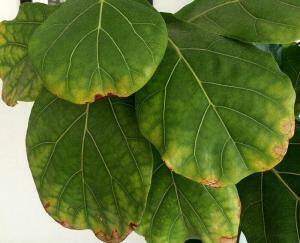
If your fiddle leaf fig’s soil is too acidic, you may notice yellowing and even crispy, brown spots around the edges of the leaves, especially near the bottom of the plant. This is caused by nutrient deficiencies since plants need a certain pH in order to absorb nutrients properly.
If you notice this discoloration pattern, you’ll want to repot your plant into a fast-draining soil with a pH of 6 (or as close as you can get to it). Our Fiddle Leaf Fig Soil is an excellent choice!
Grab Your Free Guide!
With this guide, you’ll be a fiddle leaf fig pro! Make sure to grab your free Fiddle Leaf Fig Photo Troubleshooting Guide for a quick visual reference!
To learn more:
- Sign up for our free Fiddle Leaf Fig Care 101 Webinar or our free Fiddle Leaf Fig Course, and make sure you’re subscribed to our newsletter.
- Download our free Propagation Guide
- Read The Fiddle Leaf Fig Expert, your complete guide to growing healthy fiddle leaf fig plants. The book is available in full-color paperback or Kindle edition on Amazon now!
- Join our Facebook Community and chat with other fiddle leaf fig lovers.
Grab the Essentials for Your Fiddle Leaf Fig:
- Premium Fiddle Leaf Fig Potting Soil
- Fiddle Leaf Fig Plant Food
- Root Rot Treatment to treat one of the most common issues affecting fiddle leaf figs.
- Houseplant Leaf Armor to protect against insects, bacteria, and fungus (As an added bonus, it also cleans and adds shine to your plant’s leaves!)
- Moisture meter to always know when your plant is thirsty.
- Houseplant Propagation Promoter to propagate more quickly and with more success.


